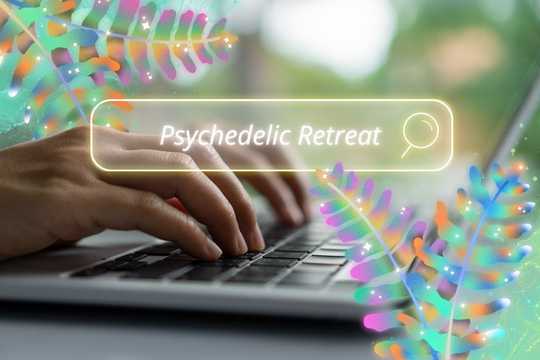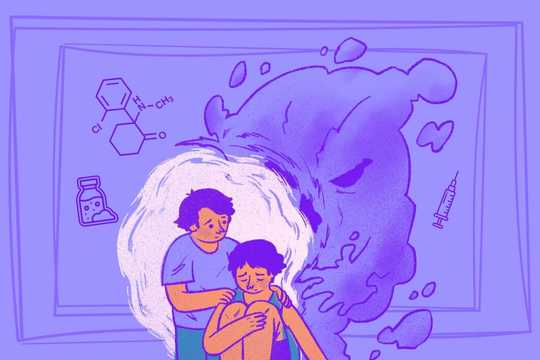Ketamine therapy is incredibly promising for the treatment of depression. But what should you know before a session? Join Olivia Clear, APCC as she shares insights to help you prepare for your ketamine therapy session.
Although I am a therapist, the thought of being a client participating in a type of therapy that involves non-ordinary states felt vulnerable and anxiety-provoking. Planning and researching are some of my favorite ways to manage my nerves about the unknown. So, I tried to learn everything I could for my first experience as a ketamine therapy client.
But ketamine treatment can be a big experience. So I couldn’t plan for it all. I’ve sat on both sides of the couch as a trained and practicing therapist and as a client with experience receiving ketamine therapy. I’d love to share with you what I wish I’d known before my first session.
1. Ketamine therapy may feel incredibly disorienting.
Ketamine is a dissociative anesthetic. This means you will likely feel a sense of disconnection from your body and/or mind. You’re departing from the default neural networks your brain uses to other less frequently used networks.
You may want to start your journey with an intention or an “ask” for the general experience. But also know that it may be out of your control what comes up. Opening to the unknown can be ungrounding. So it’s important to be gentle with yourself after the experience.
It’s ideal to take it slow and easy afterward. Allow yourself to return to ordinary consciousness. My favorite method is drinking miso soup and tea when the journey is over. I do this while relaxing in a dimly lit room listening to music. Time away from work or life duties can be challenging. If it’s an option, plan to step back from the day-to-day.
The only work to be done is to mindfully notice what feels present in your body through somatic sensations, emotions, or in your energy field. There’s no need to feel like you need to rush to make meaning of the experience.
2. Good boundaries are (almost) everything.
I think this is true in life. But when you’re inviting – in an experience that feels expansive (sometimes beyond space, time, and the planes of this reality) extra containment is needed. If you’re not familiar with the concepts of set and setting, I recommend reading about these guidelines to prepare for the experience.
If you’re receiving treatment via telehealth, make sure your space is protected from noise and outside intrusions. Have a TRUSTED and supportive person available in case you need them. Most importantly, emphasis on the quality of trust. Because you will likely be dissociated, and this is a vulnerable state. Be sure to let them know you’ll be under the influence of a mind-altering substance.
You might want to discuss any anticipated needs. Next, discuss how you’d prefer they help you if you want to be supported. Communication is key, even when it feels scary. This may sound like: stating a preference for firm touch, low lighting, or requesting that there are no guests in the house later in the day. Be clear about what works or doesn’t work. Now is a great time to practice vulnerability with your person. Because things might become more vulnerable from here on out.
Now is a great time to practice vulnerability with your person because things might become more vulnerable from here on out.
You can also set boundaries around how much of the substance you take. So speak with your provider about any anxieties you have surrounding the dosing. Your provider may be able to support your first experience by providing a low dose of ketamine. In turn, you can explore how it feels before potentially entering a state of heightened dissociation at a higher dose. Work with someone who hears you and can address your concerns.
3. Your playlist matters…even more than for road trips.
With ketamine, music is a tool that takes you through the journey. It sets the pace and invites you along. Your provider may have multiple playlists they use. Feel free to try them out. But don’t sit with music that you dislike. I recommend listening to music without words, or with words in a language that you don’t understand.
Consider including a mix of genres, if possible, to invite more depth into the journey. Use a streaming service for your music? Now is a good time to get a paid subscription because the commercials can bring you out of your exploration and into another sort of space.
I’ve learned from experience that it’s not fun trying to sort this out while you are sitting with ketamine (see below). If you have access, I’d also recommend noise-canceling headphones to block out the exterior world and help you go inward.
4. Your inner vision may become clearer, but your eyes might get wonky.
I somehow missed the warning about the impact ketamine can have on your vision. It might not happen to you. But it feels like my eyeballs are vibrating and unable to focus. If you have sight and would like to avoid this, an eyeshade or sleeping mask helps you focus on your inner experience instead of fighting with your eyes to return to their typical functioning.
I also recommend going to the bathroom before taking ketamine because it does change your perception. Consequently, navigating your space might be difficult or even dangerous. Ketamine also has diuretic properties. So if you didn’t think you needed to go earlier, you probably will.
5. Ketamine therapy work isn’t done alone.
You’ll need a prescribing doctor. But many clinics or practices do not offer much support regarding the integration of these experiences. The material that arises can span many different emotions and can be complex or contradictory.
Ketamine can invite in some big ideas/emotions/memories and more. And as I said earlier, the experience can be disorienting. It is normal to need support. As a therapist myself, I recommend talking with a therapist trained in integration.
If that’s not an option for you, consider attending a community-based integration circle. Or consider working with a coach or someone supportive from your spiritual community. If there’s someone within your COVID bubble, I’d also recommend having another human with whom to co-regulate your nervous system (breathing together can be lovely).
In Conclusion
These are just a few considerations I am offering for your ketamine journey. Use your discernment and know there is always more to learn!
Remember that your journey will be different from mine and everyone else’s. In my experience, the only thing predictable about working with ketamine is its lack of predictability. Having experienced multiple ketamine sessions at this point, I know it is not possible or desirable to plan for everything.
There’s an element of surrender to the experience once you’ve created a safe and supportive space for yourself. Now that you know more about ketamine treatment, what will you add to your preparation plans for ketamine therapy?






